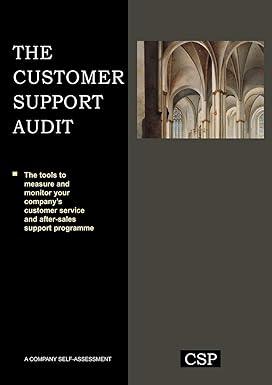Question
Mini-Practice Set 2 Merchandising Business Accounting Cycle The Fashion Rack The Fashion Rack is a retail merchandising business that sells brand-name clothing at discount prices.
Mini-Practice Set 2 Merchandising Business Accounting Cycle The Fashion Rack The Fashion Rack is a retail merchandising business that sells brand-name clothing at discount prices. The firm is owned and managed by Teresa Lojay, who started the business on April 1, 2016. This project will give you an opportunity to put your knowledge of accounting into practice as you handle the accounting work of The Fashion Rack during the month of October 2016. INTRODUCTION The Fashion Rack has a monthly accounting period. The firm's chart of accounts is shown below and on the next page. The journals used to record transactions are the sales journal, purchases journal, cash receipts journal, cash payments journal, and general journal. Postings are made from the journals to the accounts receivable ledger, accounts payable ledger, and general ledger. The employees are paid at the end of the month. A computerized payroll service prepares all payroll records and checks. INSTRUCTIONS 1. Open the general ledger accounts and enter the balances for October 1, 2016. Obtain the necessary figures from the postclosing trial balance prepared on September 30, 2016, which is shown on page 482. (If you are using the Study Guide & Working Papers, you will find that the general ledger accounts are already open.) 2. Open the subsidiary ledger accounts and enter the balances for October 1, 2016. Obtain the necessary figures from the schedule of accounts payable and schedule of accounts receivable prepared on September 30, 2016, which appear on page 483. (If you are using the Study Guide & Working Papers, you will find that the subsidiary ledger accounts are already open.) 3. Analyze the transactions for October and record each transaction in the proper journal. (Use 10 as the number for the first page of each special journal and 16 as the number for the first page of the general journal.) 4. Post the individual entries that involve customer and creditor accounts from the journals to the subsidiary ledgers on a daily basis. Post the individual entries that appear in the general journal and in the Other Accounts sections of the cash receipts and cash payments journals to the general ledger on a daily basis. 5. Total, prove, and rule the special journals as of October 31, 2016. 6. Post the column totals from the special journals to the general ledger accounts. Page 480 7. Check the accuracy of the subsidiary ledgers by preparing a schedule of accounts receivable and a schedule of accounts payable as of October 31, 2016. Compare the totals with the balances of the Accounts Receivable account and the Accounts Payable account in the general ledger. 8. Check the accuracy of the general ledger by preparing a trial balance in the first two columns of a 10-column worksheet. Make sure that the total debits and the total credits are equal. 9. Complete the Adjustments section of the worksheet. Use the following data. Identify each adjustment with the appropriate letter. 1. During October, the firm had net credit sales of $9,810. From experience with similar businesses, the previous accountant had estimated that 1.0 percent of the firm's net credit sales would result in uncollectible accounts. Record an adjustment for the expected loss from uncollectible accounts for the month of October. 2. On October 31, an inventory of the supplies showed that items costing $3,240 were on hand. Record an adjustment for the supplies used in October. 3. On September 30, 2016, the firm purchased a six-month insurance policy for $8,400. Record an adjustment for the expired insurance for October.4. On October 1, the firm signed a three-month advertising contract for $4,800 with a local cable television station and paid the full amount in advance. Record an adjustment for the expired advertising for October. 5. On April 1, 2016, the firm purchased equipment for $83,000. The equipment was estimated to have a useful life of five years and a salvage value of $12,500. Record an adjustment for depreciation on the equipment for October. f. Based on a physical count, ending merchandise inventory was determined to be g $81,260. 10. Complete the Adjusted Trial Balance section of the worksheet. 11. Determine the net income or net loss for October and complete the worksheet. 12. Prepare a classified income statement for the month ended October 31, 2016. (The firm does not divide its operating expenses into selling and administrative expenses.) 13. Prepare a statement of owner's equity for the month ended October 31, 2016. 14. Prepare a classified balance sheet as of October 31, 2016. 15. Journalize and post the adjusting entries using general journal page 17. 16. Prepare and post the closing entries using general journal page 18. 17. Prepare a postclosing trial balance.
Step by Step Solution
There are 3 Steps involved in it
Step: 1

Get Instant Access to Expert-Tailored Solutions
See step-by-step solutions with expert insights and AI powered tools for academic success
Step: 2

Step: 3

Ace Your Homework with AI
Get the answers you need in no time with our AI-driven, step-by-step assistance
Get Started


